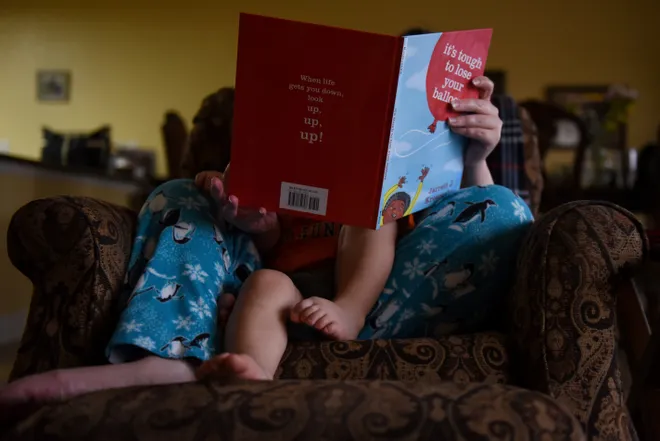This AI chatbot can help you get paid family leave in 9 states. Here's how.
A generative artificial intelligence tool that guides parents through the process of applying for paid family leave is expanding its digital footprint to all states that offer the benefit.
Paidleave.ai – a free AI chatbot through national nonprofit organization Moms First – will now be available to working moms in nine states and the District of Columbia, CEO and founder Reshma Saujani told USA TODAY.
Saujani shared the news exclusively with USA TODAY. She plans to make the announcement Tuesday at the Clinton Global Initiative Annual Meeting in New York.
In an interview, Saujani said she hoped the national rollout will lead more parents to take advantage of the benefits. She also hopes it fuels momentum for a national mandate.
“The more people who have stories like, ‘I was able to take time off to care for my ailing father, ‘I was able to take time off to be with my baby when she was in the NICU, the more we have those stories, the easier it’s going to be for us to be able to pass federal paid leave,” she said.

The news comes amid growing bipartisan support for a national paid family leave policy.
Though paid leave has broad bipartisan support among voters, the U.S. is just one of a handful of countries – and the only wealthy industrialized economy – without a federal paid leave policy.
Paid family leave typically covers a portion of a worker’s paycheck for eight to 12 weeks.
The U.S. offered paid leave and subsidized child care during the COVID pandemic but much of that spending lapsed.
Only about 27% of Americans working in the private sector have access to paid family leave through their employer, according to the latest data from the Bureau of Labor Statistics.
Those workers who can least afford to take unpaid time off work are also the least likely to have access to paid leave.
Just 6% of workers in the lowest 10% wage category – predominantly women and workers of color – get that benefit compared to nearly half of workers in the top 10%.
Paid family leave has become a hot topic during the presidential election cycle though there is wide disagreement over how to pay for it.
Eight in 10 voters want politicians to prioritize caregiving policies like paid leave, a Morning Consult poll from Melinda French Gates’ company Pivotal Ventures and Bipartisan Policy Center found in June. One in 4 voters – and 1 in 3 younger voters – regularly care for family members, the poll found.
As vice president, Kamala Harris advocated for President Joe Biden’s unsuccessful bid for 12 weeks of paid leave for all workers. Her running mate, Tim Walz, established paid leave as governor of Minnesota.
When he was president, Donald Trump pushed a parental leave policy at the urging of his daughter, Ivanka Trump, and enacted paid leave for federal workers.
Recent polling from the University of Maryland’s Program for Public Consultation found that bipartisan majorities of Americans in six swing states – Arizona, Georgia, Michigan, Nevada, Pennsylvania and Wisconsin – as well as nationally support creating a national 12-week paid family and medical leave program for all workers.
A measure in Pennsylvania that would provide up to 20 weeks of paid family leave through a payroll tax has bipartisan sponsorship but faces GOP opposition. Some 55% of Pennsylvania Republicans support a paid family leave mandate, according to the University of Maryland poll.

With a bipartisan push in the Senate and House to extend paid benefits to more workers stalled, a growing number of states – California, Colorado, Connecticut, Massachusetts, New Jersey, New York, Oregon, Rhode Island and Washington – and the District of Columbia have stepped into the breach.
Four more states will begin offering benefits in 2026: Delaware, Minnesota, Maine and Maryland.
Even when paid family leave programs are available and workers are eligible, participation is low, Saujani said.
Fewer than 5% of eligible workers claim paid family leave benefits because they are unaware of the benefits and the application process is convoluted and complicated, she said.
Saujani conceived of Moms First’s free AI chatbot to tackle that problem. Paidleave.ai began as a pilot program in New York in December 2023.
The chatbot, which is trained on verified resources about paid family leave programs, walks parents through the process, from understanding and accessing benefits to navigating the application.
“For many parents who go on to one of these state websites and apply for paid leave, it’s just confusing. By using generative AI, it simplifies the benefits process for parents and answers their questions," Saujani said. "It tells you three things really clearly. Am I eligible for benefits? How much money am I going to get and how much time I can take off? And what’s my action plan?”
In New York, the highest increase in usage of paid family leave was among women of color. So Moms First is launching a digital campaign called “Paid Leave Pays” to reach low- and moderate-income parents in states with paid leave programs.
“The pilot in New York really showed us something we already knew, which is that moms really care about this issue, and we need to have innovative solutions to make sure they get the benefits that they deserve and that they have earned,” Saujani said.
Disclaimer: The copyright of this article belongs to the original author. Reposting this article is solely for the purpose of information dissemination and does not constitute any investment advice. If there is any infringement, please contact us immediately. We will make corrections or deletions as necessary. Thank you.







